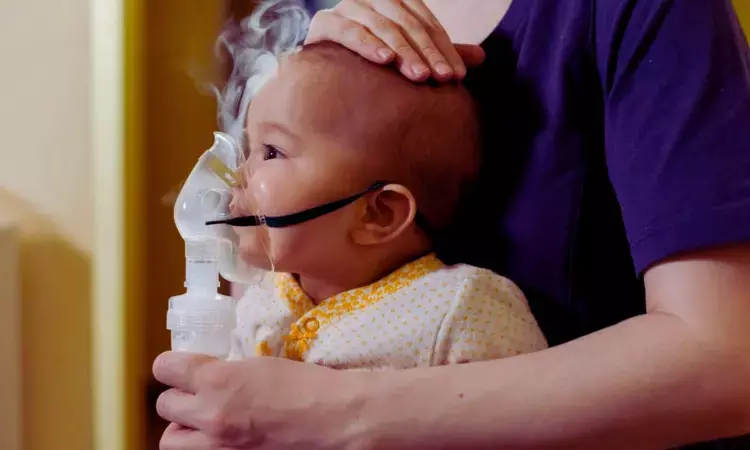- Home
- Medical news & Guidelines
- Anesthesiology
- Cardiology and CTVS
- Critical Care
- Dentistry
- Dermatology
- Diabetes and Endocrinology
- ENT
- Gastroenterology
- Medicine
- Nephrology
- Neurology
- Obstretics-Gynaecology
- Oncology
- Ophthalmology
- Orthopaedics
- Pediatrics-Neonatology
- Psychiatry
- Pulmonology
- Radiology
- Surgery
- Urology
- Laboratory Medicine
- Diet
- Nursing
- Paramedical
- Physiotherapy
- Health news
- Fact Check
- Bone Health Fact Check
- Brain Health Fact Check
- Cancer Related Fact Check
- Child Care Fact Check
- Dental and oral health fact check
- Diabetes and metabolic health fact check
- Diet and Nutrition Fact Check
- Eye and ENT Care Fact Check
- Fitness fact check
- Gut health fact check
- Heart health fact check
- Kidney health fact check
- Medical education fact check
- Men's health fact check
- Respiratory fact check
- Skin and hair care fact check
- Vaccine and Immunization fact check
- Women's health fact check
- AYUSH
- State News
- Andaman and Nicobar Islands
- Andhra Pradesh
- Arunachal Pradesh
- Assam
- Bihar
- Chandigarh
- Chattisgarh
- Dadra and Nagar Haveli
- Daman and Diu
- Delhi
- Goa
- Gujarat
- Haryana
- Himachal Pradesh
- Jammu & Kashmir
- Jharkhand
- Karnataka
- Kerala
- Ladakh
- Lakshadweep
- Madhya Pradesh
- Maharashtra
- Manipur
- Meghalaya
- Mizoram
- Nagaland
- Odisha
- Puducherry
- Punjab
- Rajasthan
- Sikkim
- Tamil Nadu
- Telangana
- Tripura
- Uttar Pradesh
- Uttrakhand
- West Bengal
- Medical Education
- Industry
Long-acting Muscarinic Antagonists Proven Safe and Effective for Asthma in Children Aged 6-11, suggests study

Researchers identified that long-acting muscarinic antagonists (LAMA) were both safe and effective as an add-on therapy for moderate to severe asthma in children between the ages of 6 to 11. Although LAMA treatments like tiotropium have been routine in adolescents and adults, such options have been scarce in younger children. This study was published in the journal of Paediatric Respiratory Reviews by Gabriel B. and colleagues.
Since asthma in children tends to lead to compromised quality of life, recurrent hospitalizations, and side effects of medication, the demand for efficient and safe long-term management is of utmost importance. The present research addresses a significant gap by synthesizing available evidence regarding the use of LAMA in the pediatric age group and presents an understanding of its role in the control of asthma among the younger population.
The researchers systematically searched PubMed, Embase, and the Cochrane Library for randomized controlled trials (RCTs) and observational studies of children under the age of 12 who were treated with LAMA add-on to ICS. Six studies—four RCTs and two observational studies—totalling 1,210 participants were included in the final analysis. Random-effects meta-analysis was employed for the estimation of outcomes measuring lung function, control of asthma, and adverse events. Subgroup analysis was additionally performed based on differences in LAMA dosage.
Key Findings
Pulmonary Function:
LAMA treatment markedly improved lung function:
• Peak FEV1 rose by 86.16 mL (95% CI: 18.62–153.71; p < 0.01)
• FEF25–75% rose by 0.2518 L (95% CI: 0.1971–0.3064; p < 0.01)
• FVC did not change (MD 9.69 mL; 95% CI: –34.57 to 53.95; p = 0.67)
Asthma Control:
• The Asthma Control Questionnaire reflected a mean difference of –0.07 (95% CI: –0.08 to –0.06; p < 0.01), which reflected better symptom control with LAMA.
Nighttime Symptoms and Rescue Medication:
• There were no differences in nighttime awakenings or rescue medication use between the LAMA and control groups.
Safety and Adverse Events:
• The use of LAMA in children was associated with fewer adverse events, RR: 0.88 (95% CI: 0.79–0.98; p = 0.021), verifying an acceptable safety profile.
LAMA treatment is safe and effective in children between 6–11 years with moderate to severe asthma when administered as add-on therapy to inhaled corticosteroids. The treatment markedly improves lung function and control of asthma with less side effects.
Reference:
Bolner, G., Rossi, Y. I., Dall’Acqua, J. C., Rossato, A. V., de Oliveira, F. D., Bolner, K., Fischer, G. B., Lukrafka, J. L., & Mocelin, H. T. (2025). Long-acting muscarinic antagonists as add-on treatment for asthma in children under age 12: a systematic review and meta-analysis. Paediatric Respiratory Reviews. https://doi.org/10.1016/j.prrv.2025.04.003Dr Riya Dave has completed dentistry from Gujarat University in 2022. She is a dentist and accomplished medical and scientific writer known for her commitment to bridging the gap between clinical expertise and accessible healthcare information. She has been actively involved in writing blogs related to health and wellness.
Dr Kamal Kant Kohli-MBBS, DTCD- a chest specialist with more than 30 years of practice and a flair for writing clinical articles, Dr Kamal Kant Kohli joined Medical Dialogues as a Chief Editor of Medical News. Besides writing articles, as an editor, he proofreads and verifies all the medical content published on Medical Dialogues including those coming from journals, studies,medical conferences,guidelines etc. Email: drkohli@medicaldialogues.in. Contact no. 011-43720751


